Series Editors’ Foreword
Preface
Contents
1 Introduction
1.1 Robotics
1.2 Robot Mechanical Structure
1.2.1 Robot Manipulators
1.2.2 Mobile Robots
1.3 Industrial Robotics
1.4 Advanced Robotics
1.4.1 Field Robots
1.4.2 Service Robots
1.5 Robot Modelling, Planning and Control
1.5.1 Modelling
1.5.2 Planning
1.5.3 Control
Bibliography
Basic textbooks
Specialized books
Edited collections on the state of the art of research
Scientific journals
Series of international scientific conferences
2 Kinematics
2.1 Pose of a Rigid Body
2.2 Rotation Matrix
2.2.1 Elementary Rotations
2.2.2 Representation of a Vector
2.2.3 Rotation of a Vector
2.3 Composition of Rotation Matrices
2.4 Euler Angles
2.4.1 ZYZ Angles
2.4.2 RPY Angles
2.5 Angle and Axis
2.6 Unit Quaternion
2.7 Homogeneous Transformations
2.8 Direct Kinematics
2.8.1 Open Chain
2.8.2 Denavit–Hartenberg Convention
2.8.3 Closed Chain
2.9 Kinematics of Typical Manipulator Structures
2.9.1 Three-link Planar Arm
2.9.2 Parallelogram Arm
2.9.3 Spherical Arm
2.9.4 Anthropomorphic Arm
2.9.5 Spherical Wrist
2.9.6 Stanford Manipulator
2.9.7 Anthropomorphic Arm with Spherical Wrist
2.9.8 DLR Manipulator
2.9.9 Humanoid Manipulator
2.10 Joint Space and Operational Space
2.10.1 Workspace
2.10.2 Kinematic Redundancy
2.11 Kinematic Calibration
2.12 Inverse Kinematics Problem
2.12.1 Solution of Three-link Planar Arm
2.12.2 Solution of Manipulators with Spherical Wrist
2.12.3 Solution of Spherical Arm
2.12.4 Solution of Anthropomorphic Arm
2.12.5 Solution of Spherical Wrist
Bibliography
Problems
3 Differential Kinematics and Statics
3.1 Geometric Jacobian
3.1.1 Derivative of a Rotation Matrix
3.1.2 Link Velocities
3.1.3 Jacobian Computation
3.2 Jacobian of Typical Manipulator Structures
3.2.1 Three-link Planar Arm
3.2.2 Anthropomorphic Arm
3.2.3 Stanford Manipulator
3.3 Kinematic Singularities
3.3.1 Singularity Decoupling
3.3.2 Wrist Singularities
3.3.3 Arm Singularities
3.4 Analysis of Redundancy
3.5 Inverse Differential Kinematics
3.5.1 Redundant Manipulators
3.5.2 Kinematic Singularities
3.6 Analytical Jacobian
3.7 Inverse Kinematics Algorithms
3.7.1 Jacobian (Pseudo-)inverse
3.7.2 Jacobian Transpose
3.7.3 Orientation Error
3.7.4 Second-order Algorithms
3.7.5 Comparison Among Inverse Kinematics Algorithms
3.8 Statics
3.8.1 Kineto-Statics Duality
3.8.2 Velocity and Force Transformation
3.8.3 Closed Chain
3.9 Manipulability Ellipsoids
Bibliography
Problems
4 Trajectory Planning
4.1 Path and Trajectory
4.2 Joint Space Trajectories
4.2.1 Point-to-Point Motion
4.2.2 Motion Through a Sequence of Points
4.3 Operational Space Trajectories
4.3.1 Path Primitives
4.3.2 Position
4.3.3 Orientation
Bibliography
Problems
5 Actuators and Sensors
5.1 Joint Actuating System
5.1.1 Transmissions
5.1.2 Servomotors
5.1.3 Power Amplifiers
5.1.4 Power Supply
5.2 Drives
5.2.1 Electric Drives
5.2.2 Hydraulic Drives
5.2.3 Transmission Effects
5.2.4 Position Control
5.3 Proprioceptive Sensors
5.3.1 Position Transducers
5.3.2 Velocity Transducers
5.4 Exteroceptive Sensors
5.4.1 Force Sensors
5.4.2 Range Sensors
5.4.3 Vision Sensors
Bibliography
Problems
6 Control Architecture
6.1 Functional Architecture
6.2 Programming Environment
6.2.1 Teaching-by-Showing
6.2.2 Robot-oriented Programming
6.3 Hardware Architecture
Bibliography
Problems
7 Dynamics
7.1 Lagrange Formulation
7.1.1 Computation of Kinetic Energy
7.1.2 Computation of Potential Energy
7.1.3 Equations of Motion
7.2 Notable Properties of Dynamic Model
7.2.1 Skew-symmetry of Matrix �B − 2C
7.2.2 Linearity in the Dynamic Parameters
7.3 Dynamic Model of Simple Manipulator Structures
7.3.1 Two-link Cartesian Arm
7.3.2 Two-link Planar Arm
7.3.3 Parallelogram Arm
7.4 Dynamic Parameter Identification
7.5 Newton–Euler Formulation
7.5.1 Link Accelerations
7.5.2 Recursive Algorithm
7.5.3 Example
7.6 Direct Dynamics and Inverse Dynamics
7.7 Dynamic Scaling of Trajectories
7.8 Operational Space Dynamic Model
7.9 Dynamic Manipulability Ellipsoid
Bibliography
Problems
8 Motion Control
8.1 The Control Problem
8.2 Joint Space Control
8.3 Decentralized Control
8.3.1 Independent Joint Control
8.3.2 Decentralized Feedforward Compensation
8.4 Computed Torque Feedforward Control
8.5 Centralized Control
8.5.1 PD Control with Gravity Compensation
8.5.2 Inverse Dynamics Control
8.5.3 Robust Control
8.5.4 Adaptive Control
8.6 Operational Space Control
8.6.1 General Schemes
8.6.2 PD Control with Gravity Compensation
8.6.3 Inverse Dynamics Control
8.7 Comparison Among Various Control Schemes
Bibliography
Problems
9 Force Control
9.1 Manipulator Interaction with Environment
9.2 Compliance Control
9.2.1 Passive Compliance
9.2.2 Active Compliance
9.3 Impedance Control
9.4 Force Control
9.4.1 Force Control with Inner Position Loop
9.4.2 Force Control with Inner Velocity Loop
9.4.3 Parallel Force/Position Control
9.5 Constrained Motion
9.5.1 Rigid Environment
9.5.2 Compliant Environment
9.6 Natural and Artificial Constraints
9.6.1 Analysis of Tasks
9.7 Hybrid Force/Motion Control
9.7.1 Compliant Environment
9.7.2 Rigid Environment
Bibliography
Problems
10 Visual Servoing
10.1 Vision for Control
10.1.1 Configuration of the Visual System
10.2 Image Processing
10.2.1 Image Segmentation
10.2.2 Image Interpretation
10.3 Pose Estimation
10.3.1 Analytical Solution
10.3.2 Interaction Matrix
10.3.3 Algorithmic Solution
10.4 Stereo Vision
10.4.1 Epipolar Geometry
10.4.2 Triangulation
10.4.3 Absolute Orientation
10.4.4 3D Reconstruction from Planar Homography
10.5 Camera Calibration
10.6 The Visual Servoing Problem
10.7 Position-based Visual Servoing
10.7.1 PD Control with Gravity Compensation
10.7.2 Resolved-velocity Control
10.8 Image-based Visual Servoing
10.8.1 PD Control with Gravity Compensation
10.8.2 Resolved-velocity Control
10.9 Comparison Among Various Control Schemes
10.10 Hybrid Visual Servoing
Bibliography
Problems
11 Mobile Robots
11.1 Nonholonomic Constraints
11.1.1 Integrability Conditions
11.2 Kinematic Model
11.2.1 Unicycle
11.2.2 Bicycle
11.3 Chained Form
11.4 Dynamic Model
11.5 Planning
11.5.1 Path and Timing Law
11.5.2 Flat Outputs
11.5.3 Path Planning
11.5.4 Trajectory Planning
11.5.5 Optimal Trajectories
11.6 Motion Control
11.6.1 Trajectory Tracking
11.6.2 Regulation
11.7 Odometric Localization
Bibliography
Problems
12 Motion Planning
12.1 The Canonical Problem
12.2 Configuration Space
12.2.1 Distance
12.2.2 Obstacles
12.2.3 Examples of Obstacles
12.3 Planning via Retraction
12.4 Planning via Cell Decomposition
12.4.1 Exact Decomposition
12.4.2 Approximate Decomposition
12.5 Probabilistic Planning
12.5.1 PRM Method
12.5.2 Bidirectional RRT Method
12.6 Planning via Artificial Potentials
12.6.1 Attractive Potential
12.6.2 Repulsive Potential
12.6.3 Total Potential
12.6.4 Planning Techniques
12.6.5 The Local Minima Problem
12.7 The Robot Manipulator Case
Bibliography
Problems
Appendices
A Linear Algebra
A.1 Definitions
A.2 Matrix Operations
A.3 Vector Operations
A.4 Linear Transformation
A.5 Eigenvalues and Eigenvectors
A.6 Bilinear Forms and Quadratic Forms
A.7 Pseudo-inverse
A.8 Singular Value Decomposition
Bibliography
B Rigid-body Mechanics
B.1 Kinematics
B.2 Dynamics
B.3 Work and Energy
B.4 Constrained Systems
Bibliography
C Feedback Control
C.1 Control of Single-input/Single-output Linear Systems
C.2 Control of Nonlinear Mechanical Systems
C.3 Lyapunov Direct Method
Bibliography
D Differential Geometry
D.1 Vector Fields and Lie Brackets
D.2 Nonlinear Controllability
Bibliography
E Graph Search Algorithms
E.1 Complexity
E.2 Breadth-first and Depth-first Search
E.3 A* Algorithm
Bibliography
References
Index
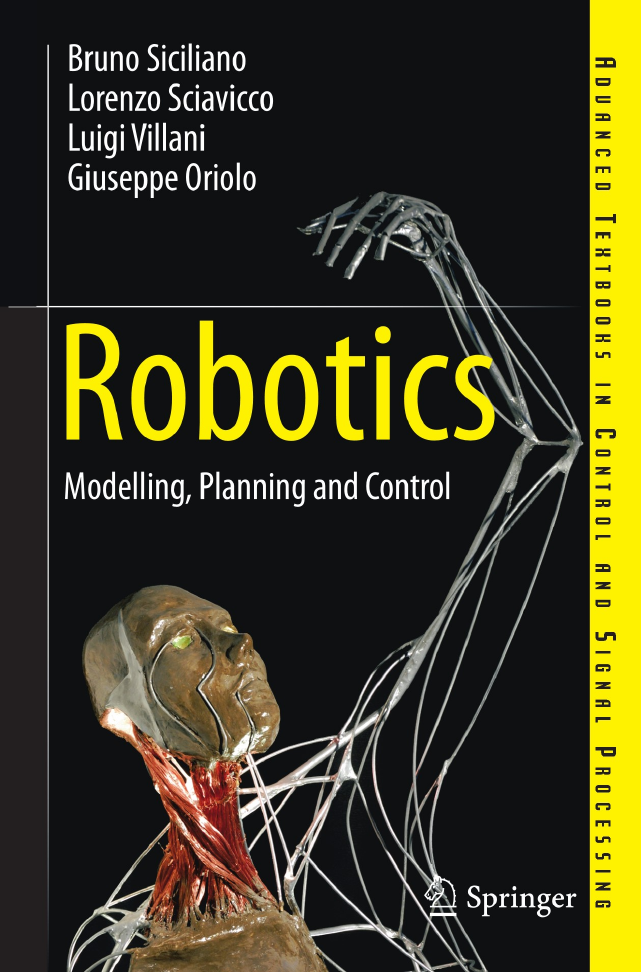
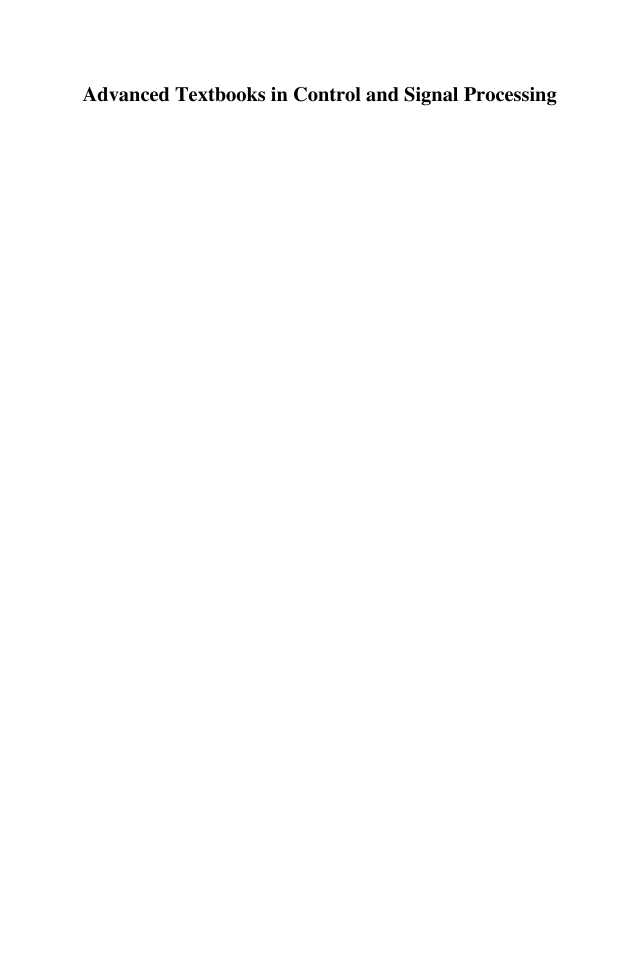
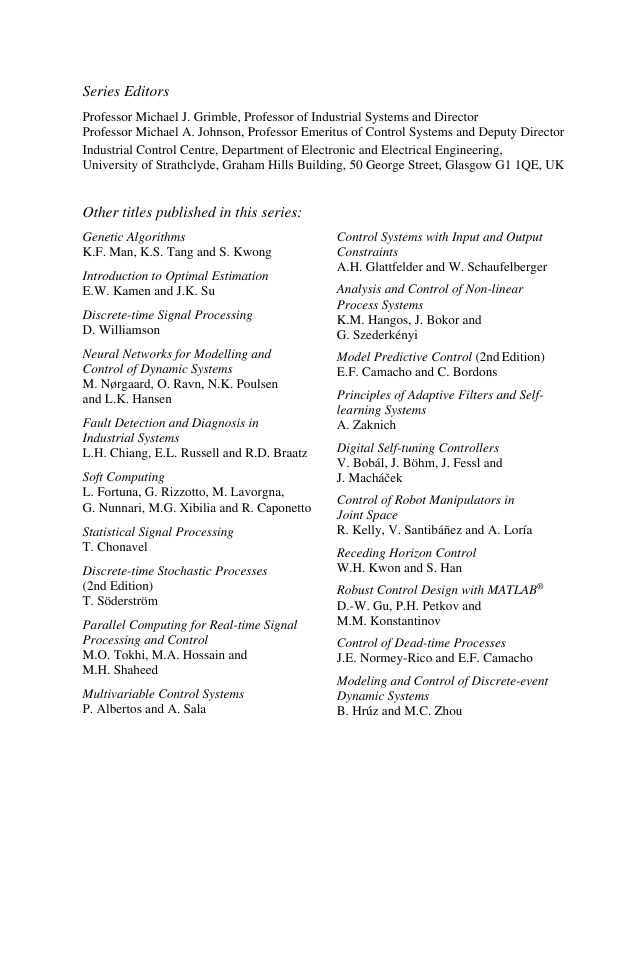
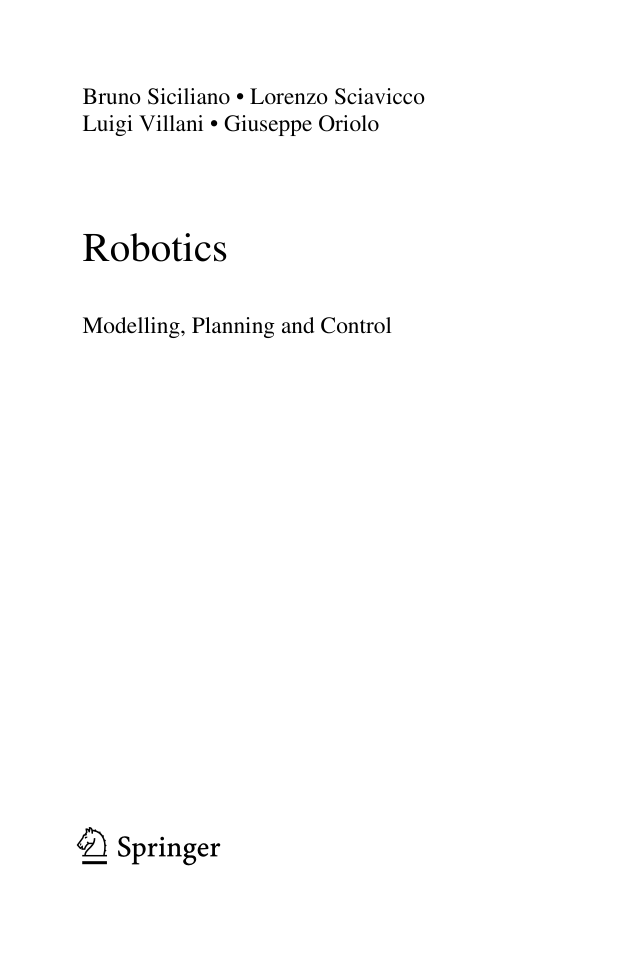


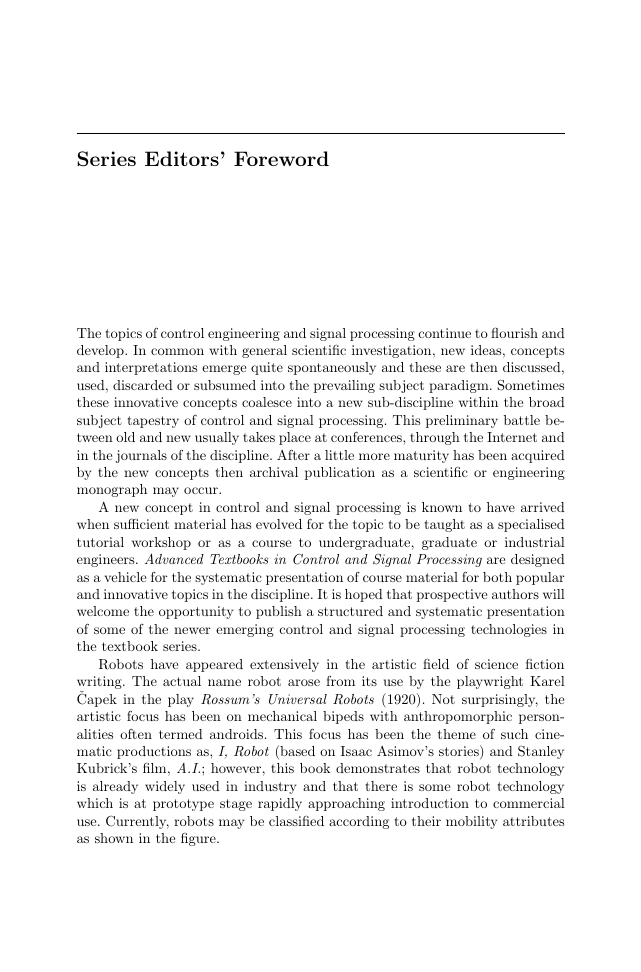
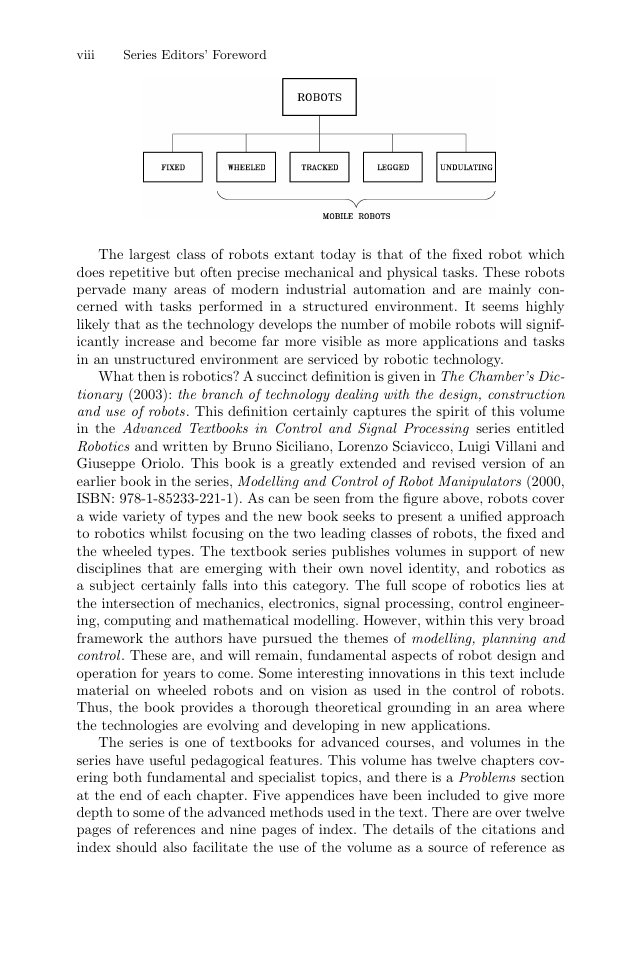








 2023年江西萍乡中考道德与法治真题及答案.doc
2023年江西萍乡中考道德与法治真题及答案.doc 2012年重庆南川中考生物真题及答案.doc
2012年重庆南川中考生物真题及答案.doc 2013年江西师范大学地理学综合及文艺理论基础考研真题.doc
2013年江西师范大学地理学综合及文艺理论基础考研真题.doc 2020年四川甘孜小升初语文真题及答案I卷.doc
2020年四川甘孜小升初语文真题及答案I卷.doc 2020年注册岩土工程师专业基础考试真题及答案.doc
2020年注册岩土工程师专业基础考试真题及答案.doc 2023-2024学年福建省厦门市九年级上学期数学月考试题及答案.doc
2023-2024学年福建省厦门市九年级上学期数学月考试题及答案.doc 2021-2022学年辽宁省沈阳市大东区九年级上学期语文期末试题及答案.doc
2021-2022学年辽宁省沈阳市大东区九年级上学期语文期末试题及答案.doc 2022-2023学年北京东城区初三第一学期物理期末试卷及答案.doc
2022-2023学年北京东城区初三第一学期物理期末试卷及答案.doc 2018上半年江西教师资格初中地理学科知识与教学能力真题及答案.doc
2018上半年江西教师资格初中地理学科知识与教学能力真题及答案.doc 2012年河北国家公务员申论考试真题及答案-省级.doc
2012年河北国家公务员申论考试真题及答案-省级.doc 2020-2021学年江苏省扬州市江都区邵樊片九年级上学期数学第一次质量检测试题及答案.doc
2020-2021学年江苏省扬州市江都区邵樊片九年级上学期数学第一次质量检测试题及答案.doc 2022下半年黑龙江教师资格证中学综合素质真题及答案.doc
2022下半年黑龙江教师资格证中学综合素质真题及答案.doc